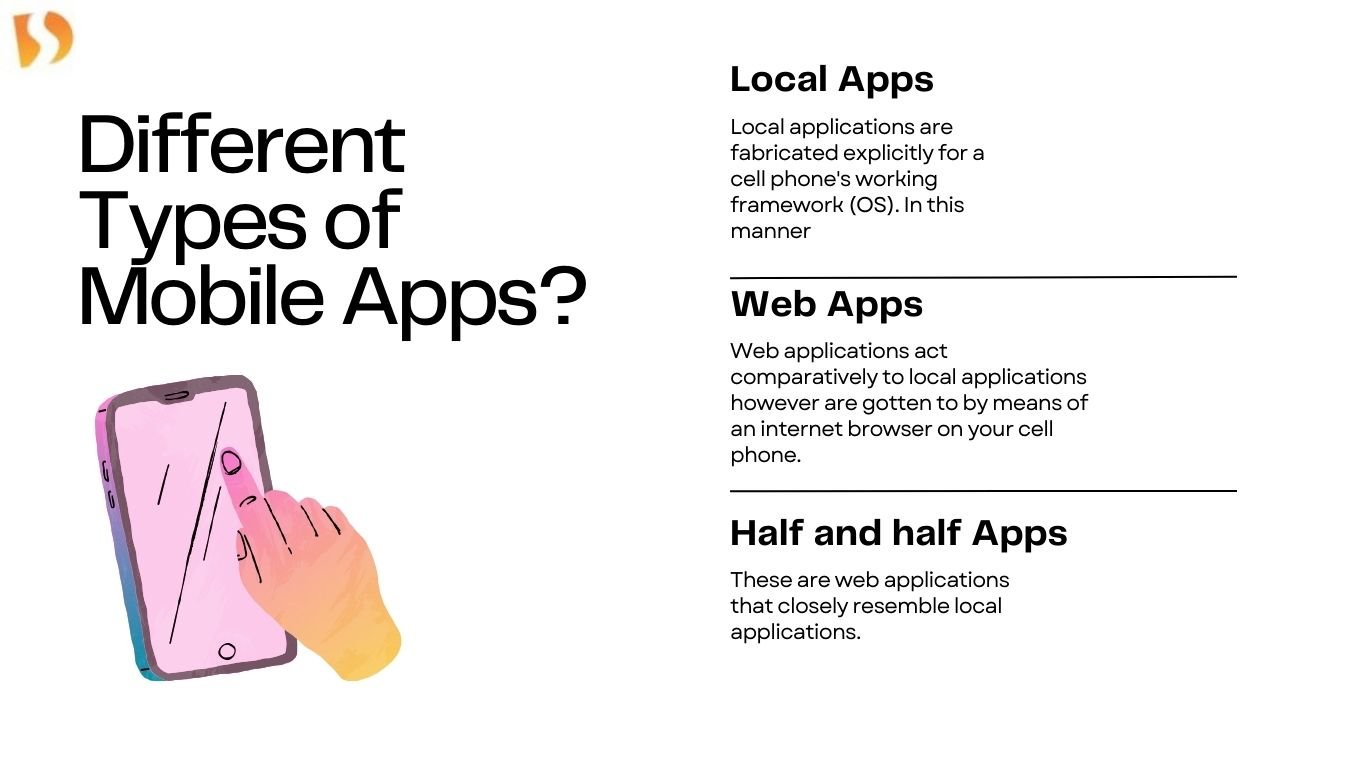Anyone want to assemble an application for their valuable business, it will definitely need to respond to the inquiry: what kind of application do we fabricate?
You may find out about different brands who promote how they fabricated their local application starting from the earliest stage, or discover an organization has a web application or a half breed application. However, what do those terms mean precisely?
We desire to acquaint you with the contrasts between the three kinds, and en route, talk about the favorable circumstances and drawbacks of each so you can show up at an educated choice.
Kinds of Mobile Apps by Technology
There are three fundamental sorts of versatile applications on the off chance that we classify them by the innovation used to code them:
Local applications are made for one explicit stage or working framework.
Web applications are responsive adaptations of sites that can deal with any cell phone or OS since they’re conveyed utilizing a portable program.
Half and half applications are blends of both local and web applications, however wrapped inside a local application, enabling it to have its own symbol or be downloaded from an application store.
Local Apps
Local applications are fabricated explicitly for a cell phone’s working framework (OS). In this manner, you can have local Android portable applications or local iOS applications, also the wide range of various stages and gadgets. Since they are worked for one stage, u can’t blend & match – say, utilize a Blackberry phone application on an Android telephone or an iOS application utilize on a Windows telephone.
Innovation Used: Native applications are coded utilizing an assortment of programming dialects. A few models include: Java, Kotlin, Python, Swift, Objective-C, C++, and React.
Masters: Because of their solitary center, local applications have the upside of being quicker and more solid as far as execution. They are for the most part more effective with the gadget’s assets than different kinds of versatile applications. Local applications use the local gadget UI, giving clients a more improved client experience.
Furthermore, in light of the fact that local applications associate with the gadget’s equipment straightforwardly, they approach a wide decision of gadget highlights like Bluetooth, phonebook contacts, camera move, NFC, and that’s just the beginning.
Cons: However, the issue with local applications lies in the way that in the event that you begin creating them, you need to copy endeavors for every one of the various stages. The code you make for one stage can’t be reused on another. This drives up expenses. Also the exertion expected to keep up and update the codebase for every form.
And afterward, every time there’s an update to the application, the client needs to download the new document and reinstall it. This additionally implies that local applications do occupy valuable room in the gadget’s stockpiling.
Web Apps
Web applications act comparatively to local applications however are gotten to by means of an internet browser on your cell phone. They are not individual applications in the feeling of downloading & introduce code into ur gadget. They’re really responsive sites that adjust its UI to the gadget the client is on. Indeed, when you go over the choice to “”introduce”” a web application, it frequently basically bookmarks the site URL on your gadget.
One of web application is the reformist (PWA) web application, which is essentially for a local application running inside program. For more profound conversation on PWAs,
read: What are Progressive Web Apps & Are They Worth It?
Innovation Used: Web applications are planned utilizing HTML5, CSS, JavaScript, Ruby, and comparable programming dialects utilized for web work.
Masters: Because it’s online, there is no compelling reason to tweak to a stage or OS. This reduces down on improvement expenses.
Additionally, there’s nothing to download. They won’t occupy room on your gadget memory like a local application, making support simpler – simply push the update live over the web. Clients doesn’t have to download at the application store and upadte.
Cons: But this is likewise relevant: web applications are totally subject to the program utilized on the gadget. There will be functionalities accessible inside one program and not accessible on another, conceivably giving clients changing encounters.
Furthermore, in light of the fact that they’re shells for sites, they won’t totally work disconnected. Regardless of whether they have a disconnected mode, the gadget will in any case require a web association with back up the information on your gadget, offer up any new information, or invigorate what’s on screen.
Half and half Apps
And afterward there are the cross breed applications. These are web applications that closely resemble local applications. They may have a home screen application symbol, responsive plan, quick execution, even have the option to work disconnected, yet they’re truly web applications made to look local.
Innovation Used: Hybrid applications utilize a combination of web advancements and local APIs. They are utilizing: Ionic, Swift, HTML5, Objective C and others.
Stars: Building a half and half application is a lot snappier and more efficient than a local application. In that capacity, a crossover application can be the base practical item – an approach to demonstrate the suitability of building a local application. They additionally load quickly, are ideal for use in nations with more slow web associations, and give clients a predictable client experience. At long last, since they utilize a solitary code base, there is considerably less code to keep up.
Cons: Hybrid applications may need force and speed, which are signs of local applications.



